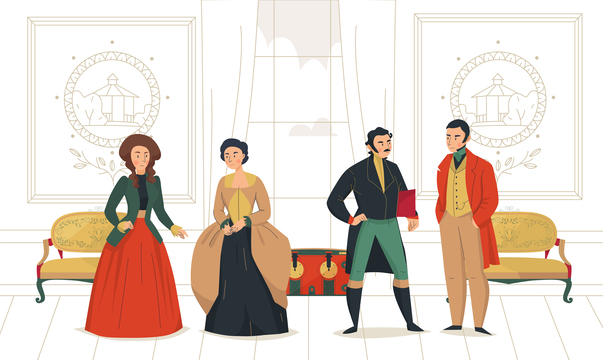Latest News

Fashion Tips and Styling

Fashion Design Techniques

Fashion Entrepreneurship

- fashion
- 27 July 2023
Fashion History
Fashion History
Fashion history is a fascinating journey through the evolution of clothing and style
over the centuries. It reflects the cultural, social, political, and economic influences
that have shaped the way people dress. Here are some key highlights from different
periods of fashion history:
1.Ancient Civilizations (Before 500 AD):
- Ancient Egyptians: Known for their elaborate and stylized garments,
such as linen tunics, draped dresses, and the iconic headdresses like
the Nemes. - Ancient Greeks: Introduced the chiton and the toga, which were draped
garments, as well as various types of tunics and cloaks.
2.Medieval Period (500 AD - 1500 AD):
- Middle Ages: Featured distinct styles like the flowing gowns with tight
sleeves for women and tunics with hose for men. - Renaissance: Characterised by voluminous gowns for women and
more structured, elaborate garments for men, often accompanied by
ruffs, collars, and doublets.
3.18th Century:
- Rococo Era: Known for its luxurious fabrics, pastel colours, and
elaborate decorations. Women's dresses featured wide panniers and
intricate embroidery. - Neoclassical Era: Inspired by ancient Greece and Rome, dresses
became more simplistic, with high-waisted Empire silhouettes.
4.19th Century:
- Victorian Era: Witnessed a wide range of styles, from the early
Romantic era with flowing gowns to the later Victorian era with
structured corsets and crinolines for women. - Men's fashion saw changes in tailoring, including frock coats, morning
coats, and tailcoats.
5.20th Century:
- Edwardian Era: Featured S-shaped corset silhouettes and "Gibson Girl"
fashion for women, and tailored suits for men - 1920s: The era of flapper fashion, with short hemlines, dropped waists,
and a more relaxed silhouette for women - 1940s: Influenced by World War II, fashion became more practical with
utility clothing for both men and women. - 1960s: Known for the "Swinging Sixties" with bold and colourful mod
fashion, mini-skirts, and psychedelic prints. - 1980s: Characterised by bold, exaggerated styles, power dressing, and
iconic fashion trends like shoulder pads and neon colours.
6. Contemporary Fashion:
- 21st-century fashion is diverse and influenced by various subcultures,
sustainability movements, and technological advancements. It
embraces a mix of vintage styles and futuristic designs.
Throughout history, fashion has been a means of self-expression, social status, and
cultural identity. It continues to evolve as designers draw inspiration from the past
while pushing boundaries and embracing innovation. Understanding fashion history
provides valuable insights into the ever-changing world of style and the impact of
fashion on society.